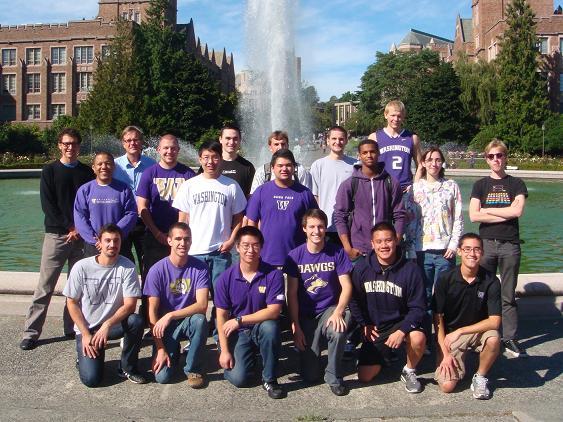UW students to design ultra-efficient hybrid powered by biodiesel



Photo: University of Washington
January 24, 2012
BY Erin Voegele
The engineering students of today will soon be designing the cars of tomorrow. In an effort to draw the best and brightest minds to the automotive field, the U.S. DOE has a long history of sponsoring advanced vehicle design competitions to foster innovation and skill development in the fields of vehicle design and engineering. In fact, the department has sponsored this type of competition for 23 years, during which time approximately 16,500 students have participated, with the vast majority of them finding work in the automotive sector.
The latest iteration of the program, EcoCAR2, kicked off in mid-2011. A total of 16 teams were selected to participate in the current competition co-sponsored by General Motors Corp. Over the course of the three-year competition, students will convert a 2013 Chevy Malibu, donated by General Motors, into a highly efficient hybrid vehicle.
Under the rules of the competition, Trevor Crain, co-leader of the University of Washington’s EcoCAR2 team, noted that the hybrid vehicles can be fueled with B20, E10, E85, hydrogen or by electricity sourced from the grid. The UW team will design its car to operate on B20, partly in an effort to help raise awareness that diesel engines can be highly efficient and clean. Crain says his team would use a higher blend of biodiesel if the competition’s rules allowed for it. Once complete, the vehicle will be fueled with 20 percent biodiesel supplied by the team’s local sponsor, Propel Fuels.
According to Tyler Rose, outreach coordinator for UW EcoCAR2 team, approximately 45 UW engineering and six business students have currently signed on to the project. Student participating in the competition do so on a volunteer basis, and are represented by both undergraduate and graduate programs.
Advertisement
During the first year of the program, the students will design their hybrid system. Crain said that the UW team has simulated many hybrid architectures, and it has chosen the one it deems best for the team project. During the first year of the competition, the students will also design the complex control system that is needed to operate a hybrid. At the end of the year, the team will present the results of its design work. Assuming everything goes well, the Malibu will be delivered so students can start the actual conversion.
“We have to bring the car pretty much up to the level of a consumer vehicle,” Crain said. “At the end of the competition, we take it to a proving grounds track owned by GM.” While onsite, the vehicle will be put through the same testing and evaluations a normal vehicle would be subject to before it is released to consumers.
Advertisement
Upcoming Events





